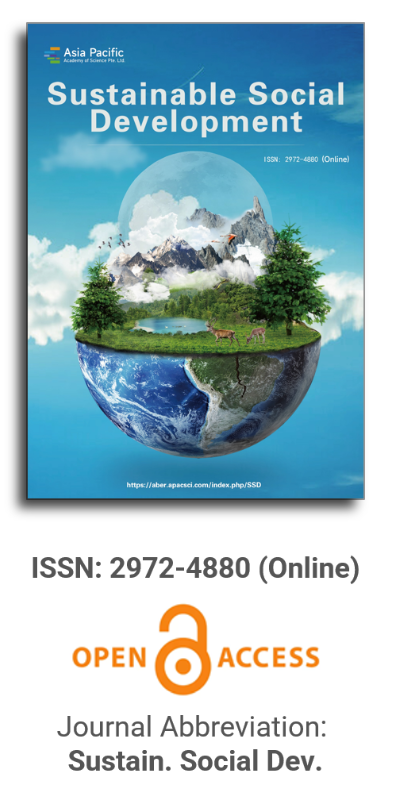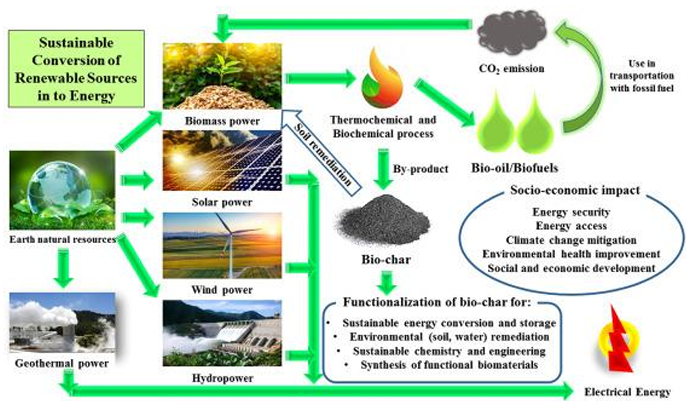
Asia Pacific Academy of Science Pte. Ltd. (APACSCI) specializes in international journal publishing. APACSCI adopts the open access publishing model and provides an important communication bridge for academic groups whose interest fields include engineering, technology, medicine, computer, mathematics, agriculture and forestry, and environment.

Assessment of benefits and challenges: Gender analysis of REDD+ pilot sites, Cross River State, Nigeria
Vol 2, Issue 4, 2024
Download PDF
Abstract
Climate change impacts and its associated injustice have been identified as one of the major challenges to the actualization of gender livelihood and resilience, particularly among vulnerable groups in rural areas. This study assessed genders’ benefits and challenges distribution measures in REDD+ (Reducing Emission from Deforestation and Forest Degradation+) pilot sites in Cross River State, Nigeria. The assessment adopted the sustainable livelihood approach of the REDD+ pilot sites (Afi Mbe, Ekuri, and Mangrove). Data were proportionately collected from selected 204 respondents at gender disaggregated levels using a questionnaire. Data were analyzed for descriptive and inferential statistics using SPSS Window (version 25). The Z-proportion test showed the existence of unequal benefit sharing that skewed in favour of men (livestock production (67%), livelihood enhancement (70%), distribution of seedlings to plants (100%), and distribution of REDD+ shirts (100%), among others. The challenges encountered, particularly for women, ranged from a lower percentage of accessibility (22%), participation (13%), benefits sharing (6%), no idea about the REDD+ (92%), no benefits from the REDD+ (90%), and no knowledge about the REDD+ (95%), among others, were statistically significant at p = 0.005. The benefit sharing of REDD+ projects, which formed the basis of fair distribution with few challenges, was statistically significant at the 95% level. Independent z-test (p < 0.005) showed that men benefited (livestock production, livelihood enhancement, distribution of seedlings to plant, and distribution of REDD+ shirts) more from the REDD+ project than women. This indicates that the project has been mundaned and considered as men’s affairs, while gender mainstreaming during the designing and implementation of the programs has been neglected. Infrastructure, employment, and alternative livelihoods, among others, were promising institutional frameworks that indicated gender resilience in the study area. The study recommends adoption of strategies that would circumvent both existing and future challenges for successive initiatives programs such as REDD+, particularly for women.
Keywords
References
- Rawls J. Some Ordinalist-Utilitarian Notes on Rawls’s Theory of Justice. Journal of Philosophy. 1973; 70(9): 245-263. doi: 10.2307/2025006
- Paavola J, Adger N. Justice and adaptation to climate change. Tyndall Centre For Climate Change Research; 2002.
- Baer P, Athanasiou T, Kartha S, et al. The Right to Development in a Climate Constrained World. The Greenhouse Development Rights Framework; 2007. p. 1.
- Griffiths T. Seeing ‘REDD’? Forests, Climate Change Mitigation and the Rights of Indigenous Peoples. UK: Forest Peoples Programme; 2008.
- Okereke C, Dooley K. Principles of justice in proposals and policy approaches to avoided deforestation: Towards a post-Kyoto climate agreement. Global Environmental Change. 2010; 20(1): 82-95. doi: 10.1016/j.gloenvcha.2009.08.004
- Leach M. Pathways to Sustainability in the Forest? Misunderstood Dynamics and the Negotiation of Knowledge, Power, and Policy. Environment and Planning A: Economy and Space. 2008; 40(8): 1783-1795. doi: 10.1068/a40215
- Brown HCP. Gender, climate change and REDD+ in the Congo Basin forests of Central Africa. International Forestry Review. 2011; 13(2): 163-176. doi: 10.1505/146554811797406651
- Westholm L, Arora-Jonsson S. Defining Solutions, Finding Problems: Deforestation, Gender, and REDD+ in Burkina Faso. Conservation and Society. 2015; 13(2): 189. doi: 10.4103/0972-4923.164203
- Stiem L, Krause T. Exploring the impact of social norms and perceptions on women’s participation in customary forest and land governance in the Democratic Republic of Congo—implications for REDD+. International Forestry Review. 2016; 18(1): 110-122. doi: 10.1505/146554816818206113
- Kariuki J, Birner R. Are Market-Based Conservation Schemes Gender-Blind? A Qualitative Study of Three Cases From Kenya. Society & Natural Resources. 2015; 29(4): 432-447. doi: 10.1080/08941920.2015.1086461
- Onojeghuo AO, Fonweban J, Godstime KJ, et al. Community participation in forest management across protected areas in south eastern Nigeria. Ife Journal of Science. 2016; 18: 213-228.
- Oyebo M, Bisong F, Morakinyo TA. Preliminary Assessment of the Context for REDD in Nigeria. Federal Ministry of Environment, the Cross River State’s Forestry Commission and UNDP Nigeria: Calabar; 2010.
- Edet AE, Okereke CS, Teme SC, et al. Application of remote-sensing data to groundwater exploration: A case study of the Cross River State, southeastern Nigeria. Hydrogeology Journal. 1998; 6(3): 394-404. doi: 10.1007/s100400050162
- National Population Commission. Nigeria. Available online: https://nationalpopulation.gov.ng/statistics/2020 (accessed on 6 May 2024).
- Basiru AO, Oladoye AO, Adekoya OO, et al. Climate change and climate justice: procedural gender analysis in redd+ piloted site, South-South, Nigeria. Journal of Agriculture, Science and Technology. 2022; 21(2): 66-82. doi: 10.4314/jagst.v21i2.6
- Basiru AO, Oladoye AO, Adekoya OO, et al. Livelihood Vulnerability Index: Gender Dimension to Climate Change and Variability in REDD + Piloted Sites, Cross River State, Nigeria. Land. 2022; 11(8): 1240. doi: 10.3390/land11081240
- Luttrell C, Loft L, Gebara MF, Kweka D. Who should benefit and why? Discourses on REDD. Analysing REDD. 2012; 129.
- Ferraro PJ, Kiss A. Direct Payments to Conserve Biodiversity. Science. 2002; 298(5599): 1718-1719. doi: 10.1126/science.1078104
- Peskett L, Huberman D, Bowen-Jones E, et al. Making REDD work for the poor. Science for Resilience and Sustainability. 2008; 18: 77-86.
- Ribot JC, Peluso NL. A Theory of Access*. Rural Sociology. 2003; 68(2): 153-181. doi: 10.1111/j.1549-0831.2003.tb00133.x
Supporting Agencies
Copyright (c) 2024 Authors
License URL: https://creativecommons.org/licenses/by/4.0/

This site is licensed under a Creative Commons Attribution 4.0 International License (CC BY 4.0).

Prof. Kittisak Jermsittiparsert
University of City Island, Cyprus






It is with deep regret that we announce the cancellation of the Forum on Sustainable Social Development & Computing and Artificial Intelligence, originally scheduled for June 15, 2025.

